
Close Window
AMD AM2 5000+
| Author: | Jason Jacobs |
| Date: | 2006.05.25 |
| Topic: | Processors |
| Provider: | AMD |
| Manufacturer: | AMD |

| Author: | Jason Jacobs |
| Date: | 2006.05.25 |
| Topic: | Processors |
| Provider: | AMD |
| Manufacturer: | AMD |
Today AMD has introduced its next step in processor architecture. The AM2 brings with it a new socket and new features processor features. AM2 will be available in all present product lines and in all present speeds. This includes the Athlon FX, Athlon X2, and Sempron product lines.
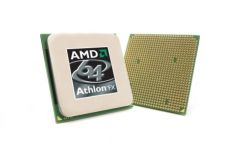
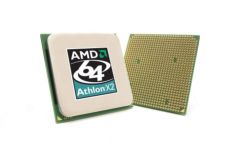
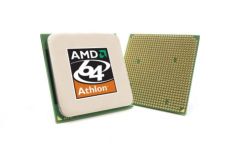
AMD's X2 Roadmap confirms what we see above and shows the new 89W maximum rating as well as cache sizes and clock speeds.
AMD has sent Techware Labs the new 5000+ to test and provide you with a close look at what AM2 offers. The new AM2 brings with it a new socket and hold down mechanism as seen below on the Asus board.
Let's take a closer look.
Techware Labs received a 5000+ to perform tests upon for this review. We hope to bring you our performance comparison of the FX-62 shortly. A closer look at the new architecture is below:

| Frequency / Cache Sizes: | 2.6GHz w/ 512KB L2 cache-per-core (1MB total L2 per processor) |
| L1 Cache Sizes: | 64K- L1 instruction + 64K - L1 data cache per core (256KB total L1) |
| CPU to Memory Controller: | same as CPU core frequencies |
| Memory Controller: | Shared integrated 128-bit wide memory controller |
| DDR2 Memory Supported: | Up to and including PC2 6400 (800MHz) DDR-2 memory |
| HyperTransport Links: | 1 |
| HyperTransport Spec: | 2GHz (2x 1000MHz / DDR) |
| Effective data bandwidth: | 20.8 GB/sec [8GB/sec HyperTransport link + 12.8GB/sec memory] |
| Packaging: | Socket AM2 organic micro-PGA |
| Fab location: | AMD's Fab 30 wafer fabrication facility in Dresden, Germany |
| Process Technology: | 90nm (.09-micron) Silicon on Insulator (SOI) |
| Approximate Transistor count: | 153.8 million |
| Approximate Die Size: | 183mm² |
| Nominal Voltage: | 1.30-1.35V |
| Max Thermal Power: | 89 W |
| Max Ambient Case Temp: | 55-70 degrees Celsius |
| Max Icc (processor current): | 66.2A |
| Min P-State (with C'n'Q) | 1.0 GHz |
| Nominal Voltage @ min -state: | 1.1V |
| Max Thermal Power @ min -state: | 31.0W |
| Max Icc @ min -state: | 25.5A |
AMD has not varied from their naming convention and as such we would expect to see a follow up 5200+ at 2.8Ghz with the same 1MB total cache. For reference we have included specifications on the FX-62 though it will not be covered in this review.
| Frequency / Cache Sizes: | 2.8GHz w/ 1MB L2 cache-per-core (2MB total L2 per processor) |
| L1 Cache Sizes: | 64K - L1 instruction + 64K - L1 data cache per core (256KB total L1) |
| CPU to Memory Controller: | same as CPU core frequencies |
| Memory Controller: | Shared integrated 128-bit wide memory controller |
| DDR2 Memory Supported: | Up to and including PC2 6400 (800MHz) DDR-2 memory |
| HyperTransport Links: | 1 |
| HyperTransport Spec: | 2GHz (2x 1000MHz / DDR) |
| Effective data bandwidth: | 20.8 GB/sec [8GB/sec HyperTransport link + 12.8GB/sec memory] |
| Packaging: | Socket AM2 organic micro-PGA |
| Fab location: | AMD's Fab 30 wafer fabrication facility in Dresden, Germany |
| Process Technology: | 90nm (.09-micron) Silicon on Insulator (SOI) |
| Approximate Transistor count: | 227.4 million |
| Approximate Die Size: | 230mm2 |
| Nominal Voltage: | 1.35-1.4V |
| Max Thermal Power: | 125 W |
| Max Ambient Case Temp: | 55-63 degrees Celsius |
| Max Icc (processor current): | 90.4A |
| Min P-State (with C'n'Q): | 1.0 GHz |
| Nominal Voltage @ min -state: | 1.1V |
| Max Thermal Power @ min -state: | 38.0W |
| Max Icc @ min -state: | 31.8A |
AMD quoted the following about the expected performance gains for Socket AM2 processors.
A fair expectation for performance gain from 939-pin to AM2 is about 1% or more across various application-based benchmarks. That assumes equal model numbers for processors and an equal configuration. This also assumes premium memory is used for each configuration. This is a rough estimate, and of course FX-62 and 5000+ come with additional frequency that will improve performance beyond that platform benefit.
While DDR2 support has been added and memory bandwidth has thus been increased dramatically, real world performance gains should be within this range, though perhaps a bit more than 1% as we feel that AMD may be gauging their actual performance gains a bit too low. This having been said I can just hear your thoughts now I'm not upgrading for 1%
. Well let's take a look at how well the 5000+ actually performed in our testing.
Socket AM2 was the next logical step for AMD and brings with it support for DDR2 as its most prominent feature difference. Other features include:
Energy Efficient models available at 65 Watts max power:
| AMD Athlon 64 X2 processors: | 4800+, 4600+, 4400+, 4200+, 4000+, and 3800+ |
Energy Efficient models available at 35 Watts max power:
| AMD Athlon 64 X2 processor: | 3800+ |
| AMD Athlon 64 processor: | 3500+ |
| AMD Sempron processors: | 3400+, 3200+, and 3000+ |
NOTE: the third digit of a desktop processor’s OPN details the maximum power consumption of that model
Adenotes
normalpower
Odenotes a 65 watt energy efficient processor
Ddenotes a 35 watt energy efficient, small form factor processor
As you can see the new AM2 brings with it DDR2 support and should yield much higher memory bandwidth and should that will beat down even the highest rated currently available Intel chips in this category.
The newly redesigned 4 bolt heatsink tray poses more of a problem than offering a feature. While the tray will offer better stability it also means that cooling solutions (especially those utilized by water cooling and phase change) may not work with this design. The cooling solution included by AMD for our testing purposes was an AVC Heatsink (Part # Z7U7414002) and is particularly noisy. The socket retention mechanism goes back to the two clip design and may or may not work with heatsinks designed to use this kind of hold down.
As AMD has done in the past, they once again have lowered the thermal rating of their processors and currently offer the AM2 in three categories. 89Watts, 65Watts, and 35Watts. Expect to pay a premium for the energy efficient models of your selection. These models should have quite good overclocking results if we take into account past performance of these type parts.
Specifications for AM2 include:
| Manufactured: | Fab 30 in Dresden, Germany |
| Process Technology: | 90-nanometer DSL SOI (silicon-on-insulator) technology |
| Packaging: | Socket AM2 (940-pin organic micro PGA) |
| HyperTransport technology: | Supports single HT link - up to 8.0 GB/sec per link bandwidth |
| Memory: | DDR2 memory controller |
| Effective data bandwidth: | Up to 12.8 GB/sec dual channel memory bandwidth |
| Total CPU bandwidth: | Up to 20.8 GB/sec (HyperTransport + Memory bandwidth) |
| Memory Speed - FX and X2: | DDR 2 memory up to and including PC2 6400 (DDR2-800) unbuffered |
| Memory Speed - A64 and Semp: | DDR 2 memory up to and including PC2 5300 (DDR2-667) unbuffered |
| Common Features Added: | AMD Virtualization technology |
| Chipsets: | ATI, NVIDIA, SiS and VIA |
| Motherboard Support: | Support expected from all major vendors - ASUS, MSI, Gigabyte, Biostar, Shuttle, ECS, Leadtek, Abit, EPox |
What has changed here from the past X2 lineup all relates to the memory controller, bandwidth, and supported ram. Additionally you can see AMD has added AMD Virtualization technology. We will discuss this later in the article.
Techwarelabs has confirmation from all major chipset providers that they will and do offer support for the new AM2 platform. Our test bed even recognized the processor and type of processor correctly. A huge kudo’s to both the motherboard manufacturer ASUS and AMD.
Here are some screenshots that may help clarify settings and parameters:
Let's fire up the 5000+ and see what she can do.
Synthetic Tests:
While Sisoft Sandra 2007 is indeed a synthetic test it does provide a good overall system gauge of performance.
As you can see the AM2 is the performance leader in all but the Whetstone tests. In the memory bandwidth benchmark none of the Intel Solutions even put up a decent fight. If you are putting together a system dependant upon ram bandwidth then look no further as AM2 is the clear choice.
It is important to mention that AM2 is significantly reliant upon low latency memory and timings even slightly different will produce vastly different results. We were able to get the Corsair memory running at 1T with remarkable results, however, the memory was not stable at DDR2 800 speeds. With DDR2 the seemingly imminent future of computer technology there is really no reason to invest in DDR and especially high latency DDR2. If I were to build a new system it would likely be using DDR2 as DDR will probably see end of life after 2006.
Futuremark 3DMark05 and 3DMark06
The 3DMark series is very dependant upon your video subsystem. If you take a look at our previous review of the FX-60, you can see the score is very close. It seems that the 3DMark series is not heavily influenced by memory bandwidth. The results of 3DMark06 are also affected in a limited manner.
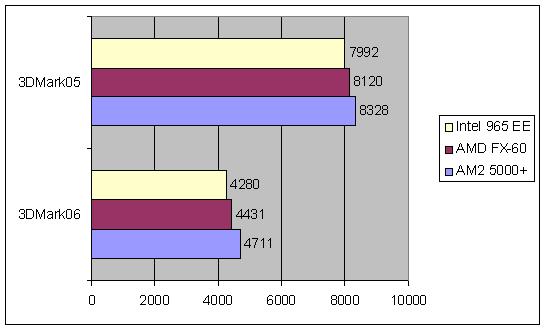
Now for some real world tests.
Real world applications of the AM2 include:
Super PI 1.5
This CPU intensive application shows how well a CPU performs in FPU, CPU, branch prediction, and cache. A comparison of times is located below. The chart is based on calculation to 1M.
The 5000+ is nearly a full second faster than the FX-60 which is over five seconds faster than the Intel 965 EE.
Gaming applications are intensive on not only the video card, but also the CPU and memory.
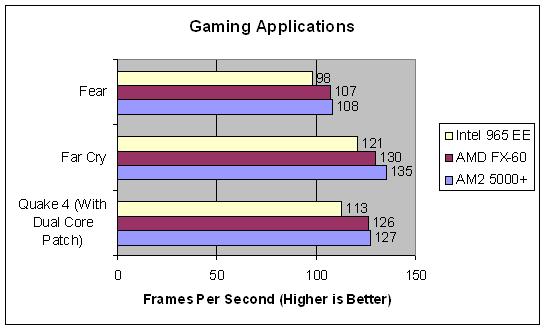
It is important to note here that the only game thus far to truly take advantage of dual core processing is Quake 4. With the latest release of V 1.2 Quake 4 has officially gained support for dual core processors and Hyperthreading. This should help provide a more level playing ground on which to form a comparison. Sadly Intel’s high end processor is outdone by both the FX-60 and the new 5000+. Gaming is still very much in AMD’s favor.
On to the Conslusion.
AMD has once again moved in the right direction with the release of AM2 with support for DDR2. While the performance gains are not as staggering as they were with the release of the Athlon, or the Athlon 64, they are still noticeable. Overall the conversion of the Athlon line to AM2 is a necessary step and brings with it additional benefits. The AM2 runs cooler and has built in support for Hardware Virtualization which could lead to the release of some exciting desktop software to take advantage of this feature.
With the release of socket AM2 and the 5000+ and FX-62 AMD has leveled the playing field by including support for DDR2. While the performance crown is still in AMD’s possession the release of Conroe may change that. I wouldn’t count AMD out of the next round so easily though as I expect they still have a product left to release this year to counter with. If I were considering a purchase and comfortable with my current build I would wait a few months to see how the offerings from both sides pan out before buying. If, however, you are a consumer with a P4 or older Athlon setup then the AM2 is an ideal choice for an upgrade. In any case the release of AM2 will drop prices on current X2 processors which is always a good thing.